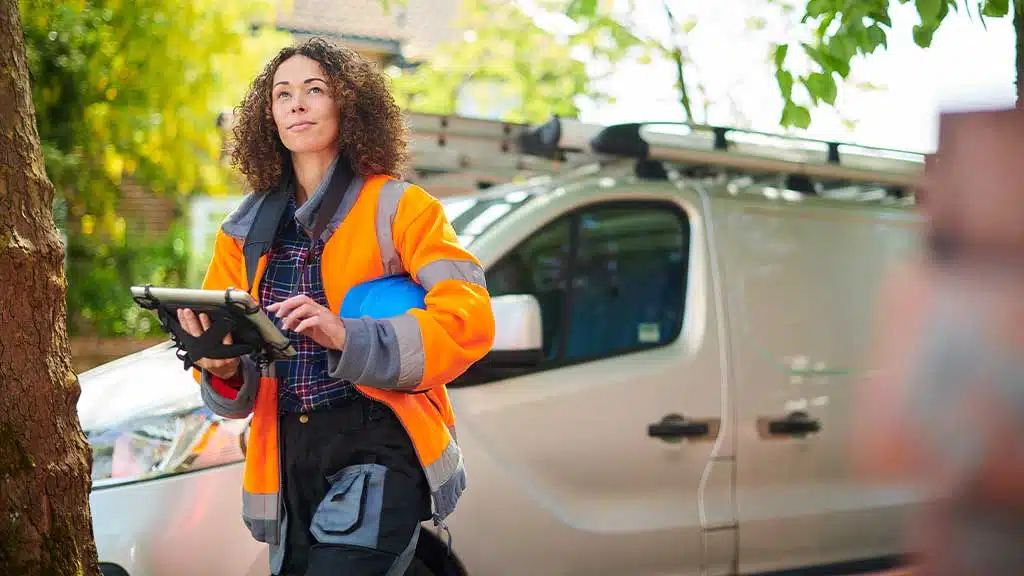There’s no denying that driver safety training offers more perks for an organization than the hassle of implementing it. Whether your organisation targets staff welfare enhancement or improving driver safety, training can also help you cut costs. First, it can help enhance fuel efficiency when drivers follow the recommended safety precautions.
By avoiding road collisions, your organisation also saves more from unnecessary repairs, hefty insurance premiums, and expensive litigations. In short, the right safety training programme can have a far-reaching impact on your organisation.
What’s your objective for implementing driver safety training?
Before jumping into finding the right training programme, what are you trying to achieve? Is it reducing road collisions? Lowering fuel expenses? Or transitioning your drivers to fully electric business vans? Whatever the reason, identifying your objective helps in choosing the right training programme.
Assessing the Risks: Identifying Common Hazards for Van Drivers
To pick the right objective, you need to conduct a thorough risk assessment. Assess every staff member who drives company vehicles, whether daily or once in a blue moon. One effective way to do this is to include the assessment in staff induction. Ensure that it’s revisited regularly to help you identify and account for every driver’s changing circumstances.
Some of the risk factors to assess include fatigue, vehicle maintenance problems, distracted driving, and driving in adverse weather. Build a risk score that aggregates these and many other factors to help your fleet managers easily identify drivers with higher risk levels.
The fleet managers can then examine the performance score of each driver to identify the most needed safety training.
Collecting data about driver’s behaviour
While there may be other ways of collecting data when the driver is on the road, the most effective way is through telematics. Telematics employs communication devices to collect, store, transmit and receive information over long distances. You can use it to collect information about the driver’s behaviour, such as speeding, acceleration at risky points, cornering, harsh braking, and more.

Telematics is equally useful in gathering information such as fuel usage and mileage. By collecting and analysing this data, you can identify drivers who can benefit the most from safety and eco-driver training programmes.
Special Considerations When Introducing Electric Vans
If you’re rolling out a stream of electric vans, your drivers are probably encountering this auto technology for the first time. Training is therefore vital to introduce them to the minute but crucial differences between electric and internal combustion engine (ICE) vans.
A few of these differences include higher instant acceleration, decelerating more when stepping off the accelerator, and how to refuel regenerative braking. Each of these factors in an electric vehicle comes with safety implications.
Besides equipping your team of drivers with expertise in driving electric vans, it helps a lot to counter range anxiety. This is one of the biggest obstacles to the widespread embrace of EVs. It’s the fear of an EV’s battery power running out before the destination.
It’s common for companies to train their drivers when introducing electric vehicles. EV safety training helps drivers to benefit the most from an electric vehicle before starting bad driving behaviours. Safety-wise, it helps eliminate driver distraction by introducing them to the seemingly fancy yet unfamiliar technology. After receiving their EV training, drivers can also adjust their driving procedures and routines, which goes a long way toward enhancing road safety.
Designing an Effective Driver Safety Training Programme
Any successful driver safety initiative greatly relies on the successful implementation of a comprehensive driver safety training programme. It’s worth noting that there’s no single-best driver training programme. Rather, the best one greatly depends on the individual requirements of a driver, and their performance during the risk assessment.
Depending on the outcome of the risk assessment, you may need to roll out two versions of the training: online and hands-on. Drivers with low safety risks may only need the online training programme. On the other hand, high-risk drivers require hands-on training on the road.
High-risk driver training

If the assessment outcome rates a high-mileage driver as a high risk, they should receive on-road safety training. This will equip them with practical, hands-on skills. Additionally, the feedback of an experienced fleet trainer helps them identify their weak points and work on rectifying them.
These drivers can benefit more from topics like defensive driving, hazard recognition, emergency response protocols and vehicle inspection procedures. Ensure the training sessions are interactive, with simulations or real-life scenarios.
Low-risk driver training
Low-risk drivers as well as those with specific requirements are better suited for modular e-learning programmes. This category of drivers may also need a webinar to bring them up to speed with the necessary road safety skills.
Moderate risk driver training
The risk assessment may also rate some drivers as moderate risk. These, in most cases, are occasional drivers who may have a past with speeding endorsements. For such a category, come up with a group training session primarily targeting speed management.
Instead of spending time creating a full-fledged driver safety training programme, simply create a group webinar. Webinars are less time-consuming and offer an inexpensive way to impart knowledge to moderate risk drivers. They’re most appropriate for drivers who occasionally drive to work.
Implementing Driver Safety Training
After assessing your drivers, you come up with a profile for each driver. This is crucial to implementing successful safety training. It helps you identify the training objective, craft a plan, and categorise drivers according to their needs.
Introduce safety training awareness
Don’t forget that the training may face some sort of resistance due to some drivers feeling that they don’t need training. Some drivers may be reluctant or feel like they’re being subjected to performance grilling. To deal with this, conduct a driver education or awareness to let them understand the importance of safety training.

Create an environment that encourages drivers to willingly participate and openly share their experiences. When drivers feel more comfortable taking part in the training, it promotes a culture of constant improvement. It also increases the chances of success for the programme.
Quantify your training objective
Fleet managers in charge of the training are also likely to feel overwhelmed when there’s no clear objective. Create a proper training and reporting plan, so your team leaders know the procedure for conducting the training. All reporting that happens should then be based on the process in place.
As for your drivers under training, make the programme enjoyable for them. Instil the belief that the training is not a punishment (of course, it isn’t) and therefore should be enjoyed. Create some sort of reward for every level a driver passes successfully. When the training is done with the driver fully engaged with a positive mindset, it is always effective.
Establish a proactive environment
Make it known to your team that completing the driver safety training programme is a crucial part of complying with the requirements of workplace safety regulations. Enlighten the staff to understand that the training is part of the company’s fundamental duty to maintain the safety of its staff.
Factor in the costs of training
There’s a cost to be incurred to ensure the success of the training programme. If you use external driver safety training service providers, you’ll need to shop around to find the best quotes for your programme. Your fleet managers must consider these costs and factor them into their budget.
Safety Routines After Training
After driver training, the business needs to implement strategies that promote driver safety on the road. Here are some considerations to keep in mind:
Conduct regular training
Driver safety isn’t a one-time thing; it should be a routine conducted from time to time. Doing this ensures your drivers are not only compliant with regulations but also work towards improving their own welfare.
Also, your programme should adapt to the changing circumstances of drivers. Regularly review your drivers’ performance through data analysis and feedback. By regularly conducting the training programme, you safeguard the long-term success of your driver safety training initiative.
Invest in more reliable vans

As much as you’re focused on driver safety training, the vans they drive must be in good condition. Stick to your routine maintenance plans to prevent breakdowns. Regular vehicle checks and maintenance help prevent vehicle failures that can lead to accidents.
Invest in vans with advanced safety features such as stability control, automatic braking systems, traction control systems, electronic stability control, and more. Most of the modern vans on the market today come with these and many more features. Examples include the new VW Transporter, Mercedes-Benz Vito, and Ford Transit Custom.
Implement Strict Resting and Drive Time Policies
Fatigue is one of the major causes of fatalities on the road. Your drivers must get ample time to rest and adhere to the maximum driving hours requirements. To ensure they strictly follow these requirements, use fleet management systems with monitoring features.
An excellent choice of fleet management solution is the Geo2 transport management system. It comes with features such as real-time tracking, offering immediate response during emergencies. Additionally, it allows fleet managers to optimise routes and ensure your drivers follow the most efficient and safest paths.
Conclusion
Implementing a van driver safety programme is a multi-faceted encounter that demands your team’s commitment and collaboration. When you make your staff understand the importance of safety training, you improve the success rate of the programme. Before rolling out the programme, conduct a comprehensive risk analysis to categorise drivers according to their risk level. This helps to ensure you offer the right training required by a driver. Through a proactive safety training approach, your organization can create a safe environment that benefits everyone.



























































